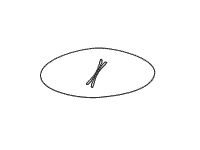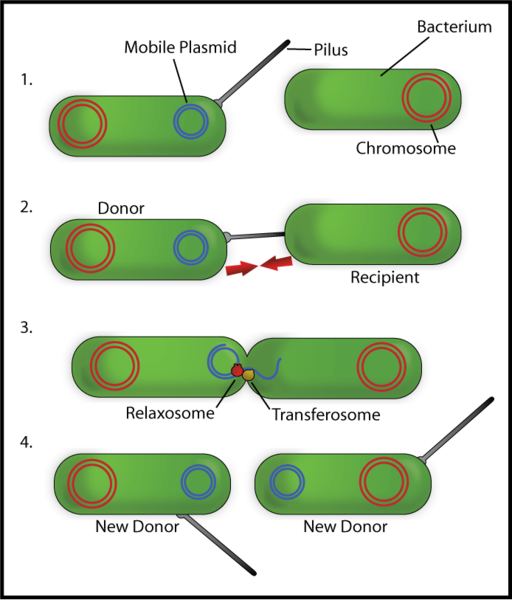Mycobacterium leprae
Reproduction
Bacteria can reproduce at a very high rate. When conditions are favorable bacteria can double their populations in about 10 minutes. However, bacteria must often have very specific condition to grow in, and because these conditions are often not met, the bacteria population can be under control. Otherwise, they would never stop reproducing. Bacteria do use 2 different methods for reproduction- sexual, and asexual reproduction. In asexual reproduction, bacteria use binary fission. Binary fission is when the cell simply splits apart into two cells. Each new cells gets an exact copy of the parent cell’s genetic information.
For a more realistic view, check out this Binary Fission video.
In some cases bacteria use sexual reproduction, which is known as conjugation. In conjugation, two parent cells join together and exchange genetic information. After the information is exchanged, the cells go through binary fission and create two new cells.
Mycobacterium leprae will, like most bacteria, go through asexual (binary fission) reproduction as long as the conditions are favorable. If necessary, sexual reproduction will be used in unfavorable conditions.
One of the main problems with Mycobacterium leprae is the slow growth rate. They have a special cell wall that all mycobacterium members share, which is difficult to destroy and also causes them to replicate very slowly. Actually, mycobacterium leprae have the longest doubling time of all bacteria.

